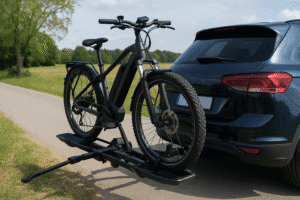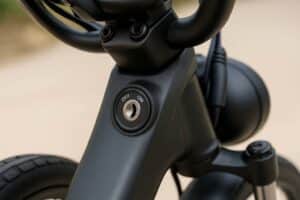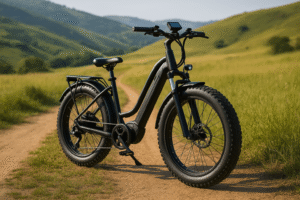Electric bikes have exploded in popularity across the U.S., with over a million sold in 2022 alone. They promise fast, fun, and eco-friendly transportation. But as their use grows, serious safety questions keep coming up.
This fall, New Jersey saw three teenagers lose their lives in two separate e-bike crashes within five days.
So the question remains. Are e-bikes themselves dangerous, or is the problem how people use them? The answer lies in both the statistics and the way cities, parents, and riders approach safety.
Key Summary:
- Hospital data shows e-bike crashes often lead to serious internal injuries compared to regular bike accidents.
- Collisions with pedestrians are significantly more common with e-bikes, making urban riding riskier.
- Concussions and other head injuries appear more frequently among e-bike riders due to higher speeds.
- Reported e-bike injuries in the U.S. have surged in recent years, rising more than sixfold between 2017 and 2022.
Are Electric Bikes Dangerous?
Electric bikes can be dangerous if misused, especially since they travel faster and weigh more than regular bikes. Studies show e-bike riders are more likely to suffer concussions, internal injuries, and pedestrian collisions compared to pedal cyclists.
The risk is not just about the technology itself but how it’s used. Many accidents involve young or inexperienced riders who may not understand how to control the extra speed and momentum.
In busy cities, riders share the road with cars and pedestrians, which raises the chances of severe crashes. While e-bikes are not inherently unsafe, they demand more responsibility from the rider.
Another factor is the battery system. Faulty or uncertified lithium-ion batteries have caused fires in some cities. Mechanical issues like brake failure or tire blowouts can also play a role, which makes regular maintenance important.
The Rise of Electric Bikes and Safety Concerns
E-bike sales in the U.S. have surged since 2019, with over 1.1 million units sold in 2022 alone, nearly four times the number sold in 2019. More people on the road naturally means more reported injuries, and hospitals have noticed the increase.
What makes this trend worrying is that many new riders were not cyclists before. Research shows that a third of e-bike buyers rarely rode regular bikes in the past.
That means more people are learning traffic rules and handling skills for the first time, but now on a faster, heavier bike.
Cities are also feeling the pressure. Delivery workers depend heavily on e-bikes, especially in places like New York, but their exposure to traffic makes them vulnerable to serious accidents.
Recent crashes in New Jersey underline the concern. In September 2025, 13-year-old Nico Lombardi died in Scotch Plains after colliding with a landscaping truck.
Just days later, two Cranford High School students, Maria Niotis and Isabella Salas, were killed while riding together when a Jeep struck them on Burnside Avenue.
Both incidents show how quickly things can turn deadly when inexperienced riders, heavy traffic, and higher speeds intersect.
They also remind parents and city planners that the surge in e-bike use among teenagers carries real risks if safety infrastructure and education do not keep pace.
What Do the Statistics Say?
Hospital and government data paint a clear picture: e-bike injuries have skyrocketed in recent years.
- Over 53,000 emergency room visits from e-bike injuries were recorded between 2017 and 2022.
- Annual injuries jumped from 3,500 in 2017 to about 24,300 in 2022, a 600% increase.
- About 36% of micromobility injuries (e-bikes, scooters, hoverboards) involved riders under age 15.
- The U.S. Consumer Product Safety Commission reported 104 e-bike-related deaths during 2017–2022, mostly from collisions with cars.
- In New York City, food delivery workers using e-bikes had a fatality rate five times higher than that of construction workers in 2021–2022.
Are E-Bikes More Dangerous Than Regular Bikes?
Yes, e-bikes appear more dangerous than traditional bicycles, mainly because of their higher speeds and heavier frames. One study found e-bike riders are three times more likely to crash into pedestrians and more likely to suffer internal injuries than pedal cyclists.
The average pedal bike travels around 15 mph, while e-bikes can reach 20 mph (Class 1 and 2) or 28 mph (Class 3).
That extra speed adds momentum, increases stopping distance, and makes collisions more severe. Riders who fall or collide at higher speeds are more likely to sustain concussions or require hospital care.
That said, the danger often depends on the rider. Experienced cyclists who follow traffic laws, wear helmets, and maintain their bikes can significantly reduce their risks.
In contrast, young or untrained riders using powerful e-bikes illegally are driving much of the injury spike seen in hospitals.
The Most Common E-Bike Injuries
When accidents happen, certain types of injuries show up more often in hospitals. Many of these are linked to speed, impact force, and the weight of e-bikes.
- Head and brain injuries: Concussions, skull fractures, and traumatic brain injuries are common because many riders skip helmets.
- Internal organ injuries: E-bike riders have nearly double the risk of internal trauma compared to pedal cyclists.
- Broken bones and fractures: Arms, legs, and spines are especially vulnerable in high-impact crashes.
- Skin abrasions and road rash: Sliding on pavement at higher speeds leads to deeper cuts and scrapes.
- Orthopedic injuries: Dislocated joints, torn ligaments, and long recovery times are frequent outcomes.
How to Ride Safely and Reduce Risks
Riding an e-bike can be safe if you take the right precautions. A few simple habits can dramatically lower your chances of injury.
- Wear a helmet every ride: Protects against concussions and head trauma.
- Choose the right bike class: Stick to Class 1 or 2 for casual use, and only ride Class 3 if you’re experienced and legally allowed.
- Maintain your bike: Check brakes, tires, and the battery before each ride to avoid mechanical failures.
- Use certified batteries and chargers: Prevents fire risks from faulty lithium-ion packs.
- Learn your stopping distance: Practice braking at higher speeds so you know how much room you need.
- Follow traffic laws: Ride in bike lanes, use lights at night, and signal turns.
- Keep kids supervised: Young riders should only use age-appropriate e-bikes with adult guidance.
Final Words
Electric bikes are changing how we travel, but they come with risks that can’t be ignored. Studies show higher chances of head injuries, internal trauma, and pedestrian collisions compared to regular bikes.
At the same time, e-bikes remain far safer than cars and bring health, fitness, and environmental benefits.
The takeaway is simple: e-bikes aren’t dangerous by default, but they can be if used carelessly.
With the right safety gear, awareness, and respect for traffic rules, riders can enjoy the convenience of e-bikes while staying safe on the road.
FAQs
Are electric bikes more likely to catch fire?
Yes, e-bikes have been linked to battery fires, especially when using uncertified or poorly made lithium-ion packs. Using certified chargers and avoiding overnight charging can greatly reduce this risk.
Can kids legally ride e-bikes?
Laws vary by state, but in many places, children under 16 are not allowed to ride Class 3 e-bikes. Some states allow younger kids to ride Class 1 or 2 models, but adult supervision is strongly recommended.
Are Class 3 e-bikes more dangerous than Class 1 or 2?
Class 3 e-bikes can reach 28 mph, which increases momentum and crash severity. This makes them riskier than Class 1 and 2, especially for inexperienced riders or younger teens.
Do e-bikes cause more accidents with pedestrians?
Yes, studies show e-bike crashes are three times more likely to involve pedestrians compared to pedal bikes. Their higher speeds give walkers less time to react.
Are e-bikes safer than scooters?
Both carry risks, but scooters tend to cause more falls due to their small wheels. E-bikes are faster and can cause more severe injuries in crashes, so each has its own safety challenges.
Michael Josh is a hands-on e-bike tester and reviewer at BoltBikers, known for putting every model through real-world rides before sharing his thoughts. With a sharp eye for performance, comfort, and build quality, he helps the team choose which bikes are worth featuring. Backed by years of experience in tech and gear reviews, Michael brings trusted, honest insights to help readers find the right e-bike for their needs.








